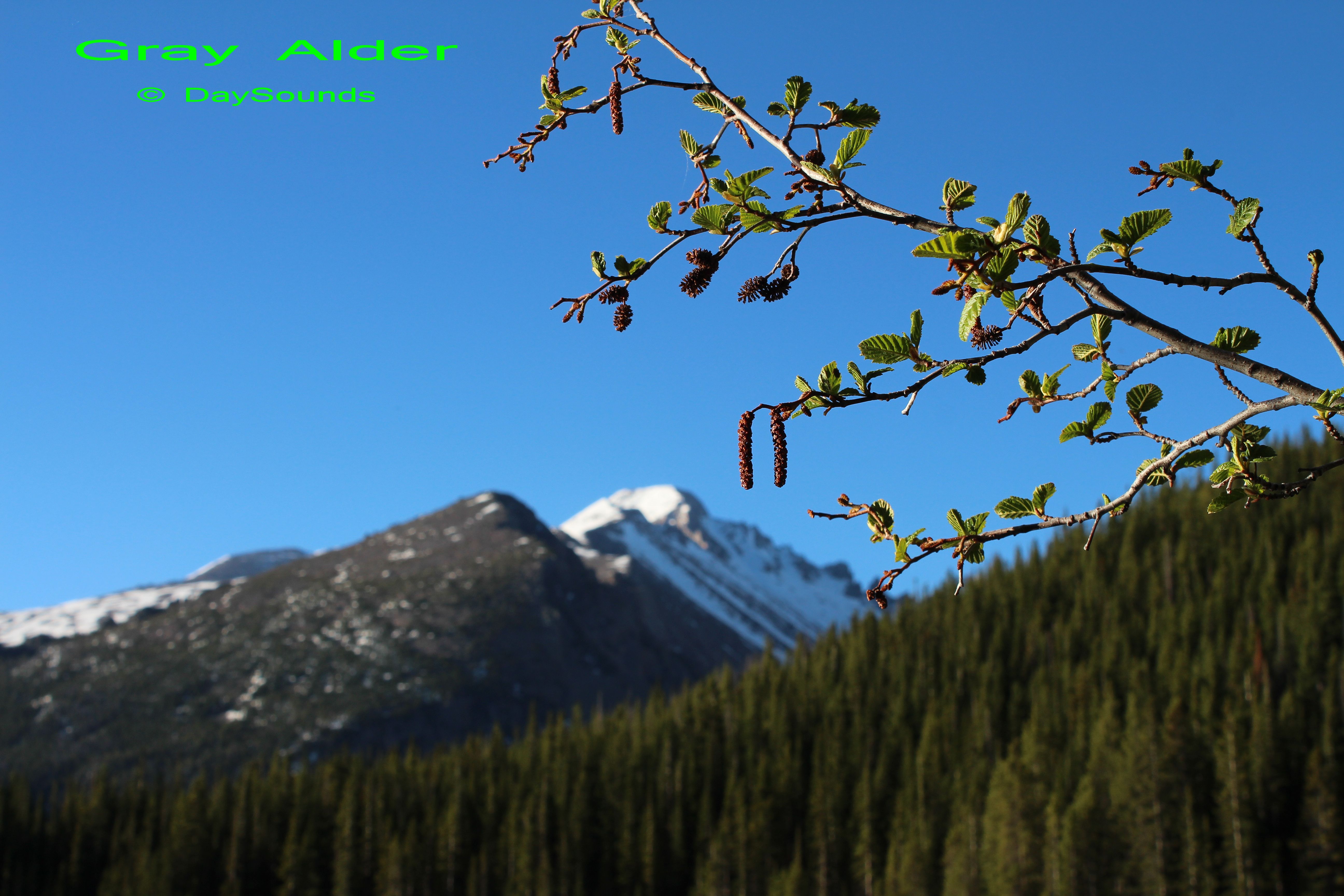by DaySounds © 2013-16

Gray Alder (Alnus incana)
provide both, nutrition and flavoring in stews. The inner bark, raw or cooked, is best
in the spring, but it can be used any time of the year.
Used internally, gray alders could help in the treatment of liver, digestive & respiratory system
issues, and as a mild analgesic. Externally, they can be utilized to treat skin conditions, like
eczema, pimples, or sores. They help flushing out toxins, and are good for the immune system.
Gray Alder (Alnus incana) or Water Birch (Betula occidentalis)?
"Cones" are the main identifier: the water birch develops soft, papery "cones,"
which most of the time are cylindrical. The gray alder grows hard, woody cones,
which are more or less conical. If you can't see any cones in either tree, try to find
them on the ground--lifting dead leaves if necessary.
There are other factors that can be used to differentiate between the 2; however,
they can become blurry:
For example, if there are no cones on the ground either--which would be highly
unusual, take a close look at the trunks' bark. The trunk of the water birch is nearly
always dark red to blackish, and its branches are light/dark red to black. The trunk
of the gray alder, on the other hand, is usually gray, and the branches are light or
medium gray. However, sometimes one can see a water birch that looks gray/
brownish and a gray alder whose trunk looks--at different parts, but not all the way--
a little red or pinkish/brownish, and with some of its branches clearly pink or light red.
If under the gray you can see red color picking through most of the trunk, it is a water
birch. If under the gray you can see pale green through most of the trunk--even if
there are a few places that look pinkish or reddish, it is a gray alder.
Similarities: They are "cousins," belonging to the same family: Betulaceae. They,
both, can be found near water in the same riparian ecosystems: foothills and
montane (although, gray alders live also in the sub-alpine zone). They oftentimes
grow several trunks within inches of the main trunk (if there is a main trunk). The
leaves look about the same (oval, toothed or doubly toothed); however, the leaves
of gray alders have deeper vein "ridges" and can be a little bigger. The trunks of
both species have a tendency to bow down; however, gray alder trunks have a
tendency to grow straighter and thicker. They, both, grow female ("cones") and
male catkins on the same tree; however, the female "cones" grow shorter and wider
on gray alders. They, both, have whitish, horizontal little lines (lenticels). Their bark
is smooth and not self-peeling.
The main thrust here is that both types of tree are edible, and that one's diet
needs to consist on a variety of foods. In a survival situation, it would be very
unusual not to find other edible plants and fungi around. Use them as well.
©DaySounds
PO Box 746497
Arvada, CO 80006
USA